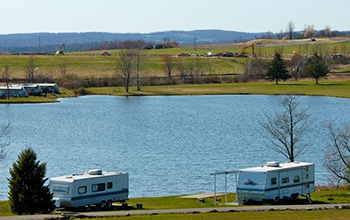[미국] NSF, 수압파쇄 하수 화학적 구성을 분석 연구 발표
하수의 안전한 처리와 폐기를 위한 지침과 규정에 도움

화학자들은 수압파쇄 하수을 분석하여 발암물질, 자극물질, 오염물질을 발견한다. [사진제공 = NSF]
수압파쇄(fracking) 하수의 구성과 파쇄 공정에서 생성된 하수의 재활용 또는 재사용에 대한 영향은 면밀히 조사되지 않았다.
최근 톨레도 대학(The University of Toledo)에 기반을 둔 미국 국립 과학 재단(National Science Foundation)의 화학자들은 수압파쇄 하수 샘플의 화학 성분을 분석하고 처리되지 않은 수압파쇄 하수에서 독성 및 발암성 오염 물질을 발견했다고 밝혔다. 이 연구는 국제학술지 환경 과학 기술(Environmental Science and Technology)에 게재됐다.
이 연구는 하수 분석에 사용되는 방법을 자세히 설명하는 것 외에도 하수 처리 및 처리 지침을 알리고, 영향을 미치며 개선할 정보가 포함되었다.
이 연구의 공동 저자인 에마누엘라 곤프레도(Emanuela Gionfriddo)는 "생산된 물에서 세계 보건 기구에 따라 인체에 위해하다고 등록된 화학 물질이 발견됐기 때문에 더 많은 모니터링과 개선 노력이 필요함을 시사한다"고 말했다. 이어서 그는 "우리의 분석은 수압 파쇄 공정에서 발생하는 프로세스와 각 부지의 지질학적 특성에 대한 통찰력을 제공한다"고 말했다.
화학자들은 수압파쇄 샘플에서 유기 가용성 종을 분리하기 위해 박막, 고체상 미량 추출(thin-film, solid-phase microextraction)이라는 접근 방식을 사용했다. 연구팀은 살충제, 자극제, 발암 물질을 포함한 250가지 이상의 유기 화합물을 발견했다. 또한, 희토류 원소와 납, 우라늄과 같은 유해 금속도 포함됐다.
연구 공동 저자인 존 키르히호프(Jon Kirchhoff)는 "고상해도의 질량 분석과 관련된 더 비싼 워크플로우(workflows)에 비해 복잡한 샘플 분석에서 더 접근하기 쉬운 기기를 사용할 수 있는 방법을 찾았다"고 말했다.
과학자들은 수압파쇄 하수의 종합적인 분석에 사용되는 기술로 석유 및 가스 생산에서 생산된 수압파쇄 하수의 사용, 재사용, 폐기를 관리하는 데 한 걸음 더 나아간 것이라고 했다. 이 연구는 사람, 동물, 땅 그리고 물에 대한 수압파쇄 하수의 부정적인 영향을 상쇄하는 데 도움이 될 것이다.
[원문보기]
Recent research analyzes the chemical composition of fracking wastewater
The data will help inform evolving guidelines and regulations for safer treatment and disposal
The composition of fracking wastewater and the ramifications of recycling or reusing wastewater produced by the fracking process have not been closely scrutinized.
Now U.S. National Science Foundation chemists based at The University of Toledo analyzed the chemical composition of fracking wastewater samples and found toxic and carcinogenic contaminants in untreated fracking wastewater. The research was published in Environmental Science and Technology.
In addition to detailing the method used to analyze the wastewater, the study contains information that will inform, influence and improve wastewater treatment and disposal guidelines.
"The discovery of these chemicals in produced water suggests that greater monitoring and remediation efforts are needed since many of them are listed as dangerous for human health by the World Health Organization," said Emanuela Gionfriddo, a co-author of the study. "Our characterization sheds insight into the processes taking place during hydraulic fracturing and the nature of the geologic formation of each well site."
The chemists used an approach called thin-film, solid-phase microextraction to separate organic soluble species in fracking wastewater samples. The team found more than 250 organic compounds, among them pesticides, irritants and carcinogens. Rare earth elements and hazardous metals such as lead and uranium were included in the census.
"We found a way to use more accessible instrumentation in the analysis of complex samples compared to more expensive workflows involving high-resolution mass spectrometry," said study co-author Jon Kirchhoff.
The technology used for the comprehensive analysis of fracking wastewater is a step forward in managing the use, reuse and disposal of fracking wastewater produced from oil and gas production, the scientists said. The research could help counteract the negative effects of fracking on people, animals, land and water.
[출처 = NSF(https://www.nsf.gov/discoveries/disc_summ.jsp?cntn_id=304669&org=NSF&from=news) / 2022년 3월 16일]
| 









































